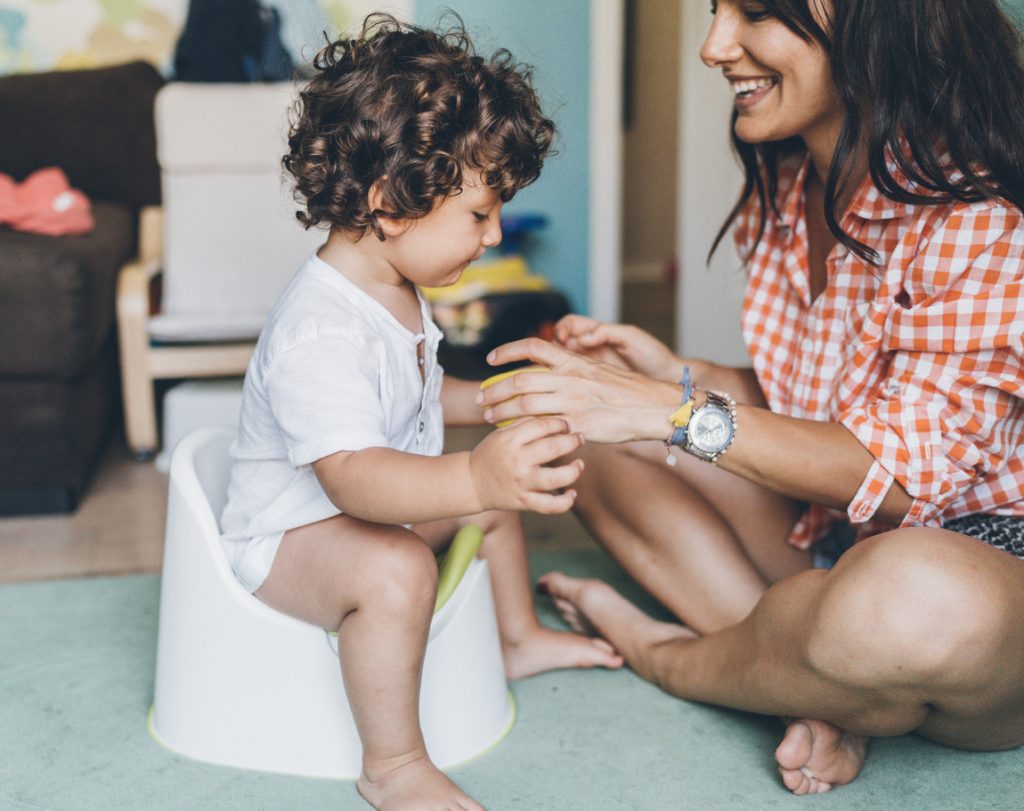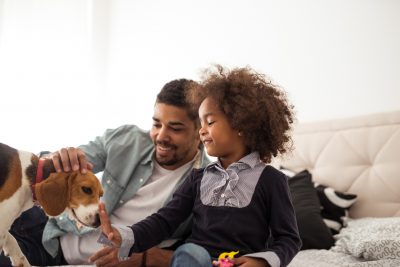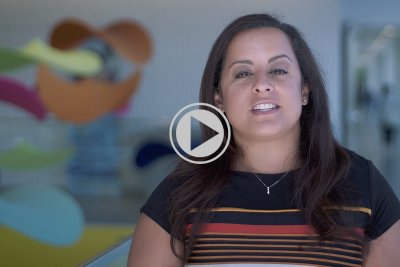几个月来,我一直在告诉自己,我即将体验训练我女儿上厕所的神奇轻松。其他妈妈一再告诉我,这种情况会发生:“哦,女孩上厕所训练得早多了,”或“男孩根本不在乎;女孩做的。”我一直在回想我和儿子关于上厕所的谈话:
“孩子,你想不想学上厕所,这样你就不用穿尿布,可以像个大男孩一样穿内裤?”
(儿子)“不,妈妈,我会在我年纪大了。”
(内心的声音,有点惊慌)“我们说的是多大?”
但是,尽管偶尔出现了明显兴趣的闪烁,但我的女儿在我说的话,我的女儿偶尔会用散发和蔑视的组合来看看我,“你想尝试使用便盆吗??“目前,让我们留下一堆性别的假设和预期,其中包含在男孩/女孩妈妈厕所训练谈话中。对于手头的实际任务,很明显,我无法在一个超自然的活动中银行让我免于帮助我的女儿到达这个大型里程碑的责任。这将需要一些育儿。
厕所培训是令人生畏的 - 可能是超过7000多本亚马逊的厕所训练相关书籍会告诉你。这7000本书也是一个线索,有很多不同的方法或建议,以便做到“正确”或“最好的”方式。值得庆幸的是,我相信有一些简单的原则可以帮助整理它:
了解你的目标
厕所培训是一个典型的发展中国家必须在某些时候实现的,以满足个人卫生和参与他或她更广泛的社会的文化期望。换句话说,未经厕所火车的孩子可能会受到社会尴尬和排斥的影响,并无法上学或参加课外活动。As a parent, then, you have two main goals: (1) facilitate your child’s success in toilet training in a timeframe that helps him/her to continue his/her social development and expected educational trajectory, and (2) do so in a way that does not produce feelings of shame, guilt, and anxiety in your child. Looking for a third goal? (3) Don’t torture yourself in the process.
让你的策略和目标保持一致
第一步是评估您孩子对厕所培训的准备情况。Developmental readiness encompasses the ability to sense the need to pee or poop, the ability to communicate that sensation to a caregiver, the ability to sit steadily on the toilet seat – whether a toddler’s potty chair or modification of the regular toilet – and to devote his or her attention to the task at hand for a sufficient period of time. Some experts recommend the ability to pull his or her pants up and down, but initially your child will be accompanied to the toilet 100% of the time, and I consider this less necessary than the other requirements. In addition to this, your child should display interest in using the potty and a desire to be “clean” or be rid of diapers. Children display interest in a variety of ways, including following parents into the bathroom, asking questions, making observations and reporting when the diaper needs changing. Even after these signs appear, it may take weeks or months for the child to progress from curiosity to toilet training action, and it is important for the parent to be attuned to the child’s interest and open to his or her questions. It is helpful for parents to agree on what they consider to be appropriate terminology within the household for these bodily functions and to be consistent in their use in order to avoid creating confusion for the child.
思考你的时候厕所培训时间表,重要的是要将您的孩子作为刚刚尝试掌握任务的人。没有证据表明厕所培训的时机与情报或生命中未来的成功有任何关联。My very bright, socially adept son may have been the last in his daycare class to complete toilet training (I’m not actually sure, since I made a conscious decision not to create comparisons), but he was within the same general timeline, completely within reported age norms, and well before he needed to enter the diaper-free zone known as preschool. Your child will eventually perceive the need to conform to this social expectation, and the process will be completed more quickly and painlessly on his/her timeline than on an imposed one. There is currently no evidence to support the idea that offering a reward – other than the intrinsic rewards of being “more grown up” and being rid of diapers – will create the necessary motivation to complete toilet training. Positive reinforcement even for small attempts at progress is encouraged – go ahead and be very liberal with your praise. Most importantly, discipline or shaming has no place in a successful toilet training process and is more likely to prolong or delay it. Negative comparisons to other children’s progress should be avoided, and once training is underway, the inevitable accidents should be met with a matter-of-fact change of clothing and an “It’s OK – we’ll get it the next time!” Frequent accidents are generally an indication that the child is not quite ready, and at that point you should resume the use of diapers until the child expresses interest in trying again. Remember, too, that nighttime dryness is generally achieved somewhat later than daytime dryness, and your child may require a diaper or “pull up” at night for some time after daytime toilet training is achieved.
为了不折磨自己,完全可以接受避免使用那些你觉得只会激怒你的厕所训练方法。其他父母告诉我,他们使用了经常被吹捧的方法,让他们的孩子在一个周末完全裸体在房子里跑来跑去,每当他或她需要去或开始去厕所的时候,就带着他或她去上厕所。这对他们很有效,向他们致敬。我的洁癖甚至无法想象这种稍微有点野蛮的情况,我很快就把它从我可能考虑的工具列表中删除了。同样,我的孩子们对真正的便盆比对便盆椅更感兴趣,我也很高兴没有一个elmo形状的便盆需要清空和清理。然而,为成功提供定时的“机会”对我来说确实有意义,我经常尝试在洗澡前后和睡觉前坐在便盆上。这可能需要一些尝试和错误,但有耐心和完整的幽默感,你会发现什么对你和你的孩子有效。
使用你的资源
你身边的帮手比你想象的要多。与至少有一个孩子成功上厕所的其他家长交谈(越多越好);我经常为我生命中那些人的聪明才智而惊叹,你可能也会为你最好的朋友想出的天才主意而惊叹。如果你不在家里的时候,你的孩子去了日托所或有其他看护人照看,你可以征求他们的意见和经验,并与他们联系,看看你是否始终保持一致,他们是否认为一切都在正轨上。和他们一起努力,在你能做到的地方取得渐进的进步,如果可能的话,试着在周末安排白天的日常活动。记住,你的父母和你的另一半的父母不知怎么设法训练你和你的另一半上厕所,他们可能对什么对你的孩子有用或什么可能不太有用有特别的见解。不要忘记,你可以利用你的儿科医生和他/她的工作人员的大量专业知识,他们中的许多人已经实施了电子形式的沟通,以解决非紧急问题和指导。
我不能保证厕所训练很容易。但我可以保证会成功......最终。祝你好运!







评论